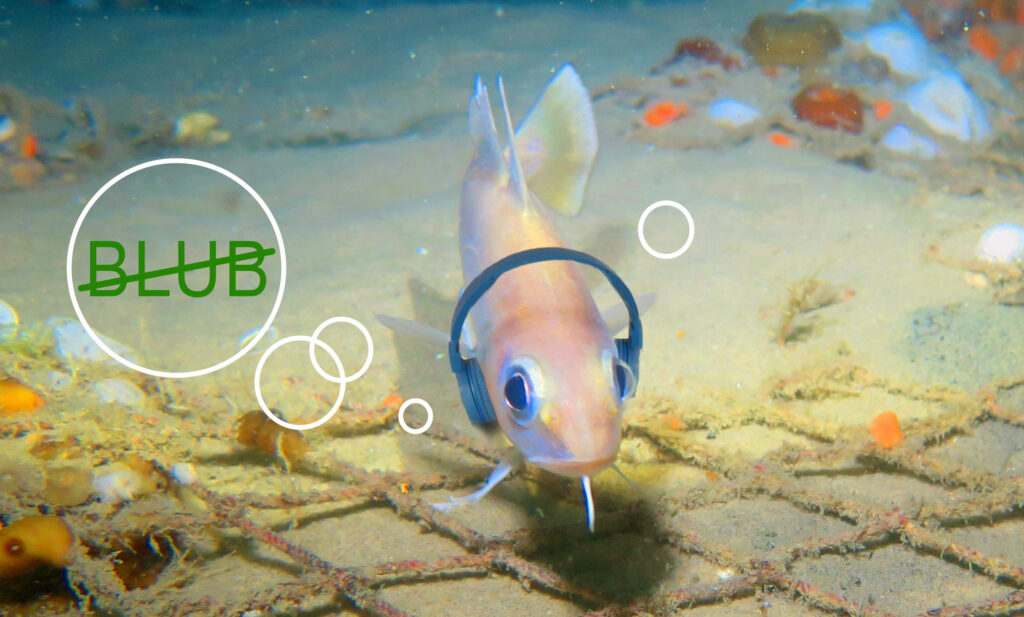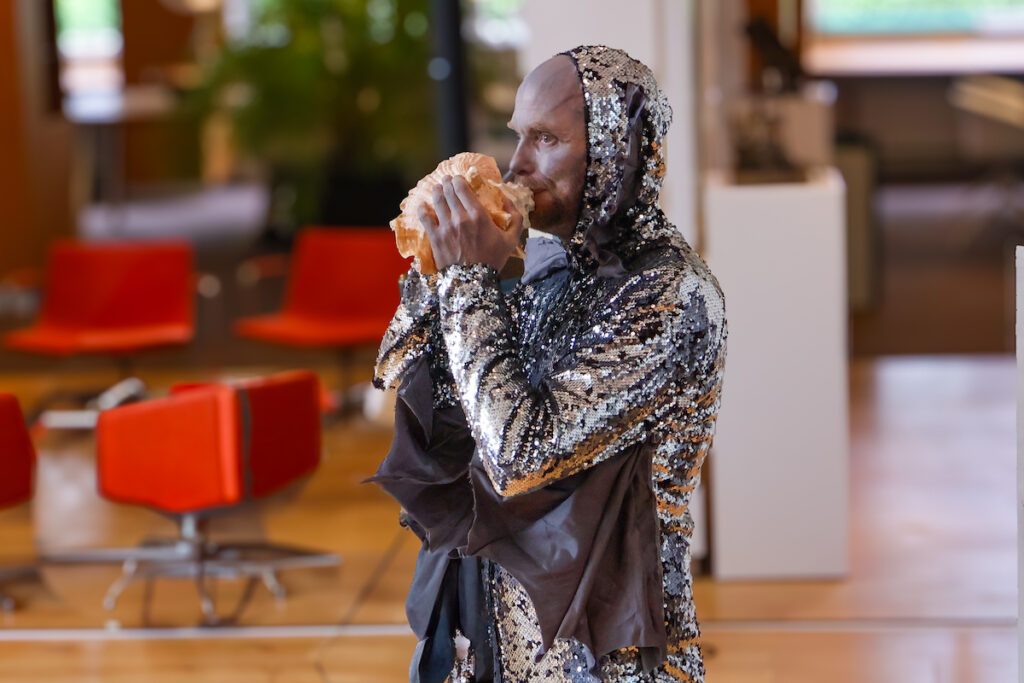Marine sound research from Wageningen University & Research and Leiden University leading to a lecture-music-performance containing music built from communicating fish, lobster and human soundpollution.

in 2023, Sound Artist Remco de Kluizenaar collaborated with Chairholders Tinka Murk at Marine Animal Ecology Group of Wageningen University and Research, and Hans Slabbekoorn at Acoustic Ecology Group of Leiden University, and their students. The collaboration was an exploration in sounds available from the North Sea in the scientific world and from fieldrecording enthusiasts, leading to a small North Sea specific database of animal sounds and typical antropogenic (human) noise pollution. Sounds of 16 species of 168 rayfinned fish that probably all make sound where found, lobsters, crustaceans, mollusks, snapping shrimps: a biodiverse choir to work with for Remco de Kluizenaar. He composed 15 minutes of music from these sounds, and Tinka Murk, MSc student Anna Beresetova and Remco wrote a 45 minute performance. The performance interwove music composed from the underwater soundrecordings with information and stories about how and why animals in the sea produce sound. Thus the performance showed to a broader audience, what the “biodiveristy sensing box” line in MAE’s research from 2023 onward, is about, and why this research is relevant for wildlife protection, foodsafety and animal welfare. The music illustrated stories from the research, and was live illustrated itself with moving shadows, silhouets of marine animal life, see two example video’s below.
Following the performance of “Voice of the North Sea,” scientists Tinka Murk and composer Remco de Kluizenaar appeared twice on national Radio NPO1: on the prime-time program “Nieuws en Co” on September 4, 2023, and on “De Nacht van de NTR” on June 29, 2023. (And on August 26, 2023, on Radio Gelderland, broadcast no longer available.)
This video gives an impression of the performance as shown in 2023 at Impulse conference centre Wageningen University & Research, Netherlands.
By-catch

An art and science project like this never happens without delivering more than just the “deliverables” predicted to the financial supporters, in this case Wageningen Municipality and Wageningen University and Research’s Marine Animal Ecology Group. From the quest for new sounds, Remco functioned as an intermediate between Marine Biologists at many European institutes, informing them about eachother’s work and even leading to a formally signed, intensified scientific collaboration between Wageningen UR and Scientists at University Ghent and VLIZ. A shared publication was the direct result of the artists awareness about what the two teams had to offer eachother scientifically. So the composition of the music for the show, lead to speeding up and strengthening the shared efforts for wildlife protection: unexpected, not possible to predict, but not a rare kind of thing to happen in such an art&science collaboration. That is interesting by-catch of course! Furthermore, for the involved scientists the making process provided inspiration for new research questions, a fun sideproject to study playing shellhorn for, opportunities to meet new laymen audiences and to present scientific work in unusual ways, also after the show. In 2024 small parts of the show where presented at the Bioacoustics Day in Schiermonnikoog and used in art education in primary schools in Ede, telling the story about fish communication there. In 2025 Remco, after request by the “Wageningen Biodiversity Challenge”, wrote a new version of the performance: a 15 minute version called “Vissen Latijn / Fishtales”. This show annex keynote presentation is programmed several times at scientific and non-scientific events, the time adapted to the purpose from 12 to 30 minutes, with or without Q&A, etc. The first presentation at Biodiversity Challenge 2025 was a nice “paybback” to initial main sponsor Wageningen Municipality, giving Wageningen audience free access to the show payed by the University, in the Grote Kerk, central marketsquare Wageningen. In 2025 the artwork turned out to be useful for this page about underwater sound research on the Wageningen University & Research website. So even if the collaboration dates back to march-july 2023, there is still value, spinning of the project.
Thanks to:
Voice of the North Sea is made possible by contributions from Wageningen Municipality and WUR. It is developed in collaboration with chairholder Tinka Murk from WUR Marine Animal Ecology, and supported by MAE students Anna Berestova, Valentin Bordoux, Ties Maris and others. Also involved in the cocreation: Hans Slabbekoorn, chairholder Acoustic Ecology at Leiden University. With auditive contributions from: Soprano Tineke Roseboom, VLIZ.be and University Gent (Clea Parcerisas), Baudewijn Odé, Rijksuniversiteit Groningen (Annebelle Kok), sound artist Ansgar Silies.de, Jomopans/Rijkswaterstaat (Niels Kinneging), Jeroen Hubert (Leiden), Ambient.de hydrophones, fishbase.net, dosits.org, xeno-canto.org and other databases, freesound.org, and many field recording enthusiasts.
The development of “Vissenlatijn/FishTales” is assigned by Wageningen Biodiversity Initiative and supported by a group of scientists striving for more regular art&science collaborations, that used Voice of the Northsea as a showcase in their publication and prebooked it for an associated event.
